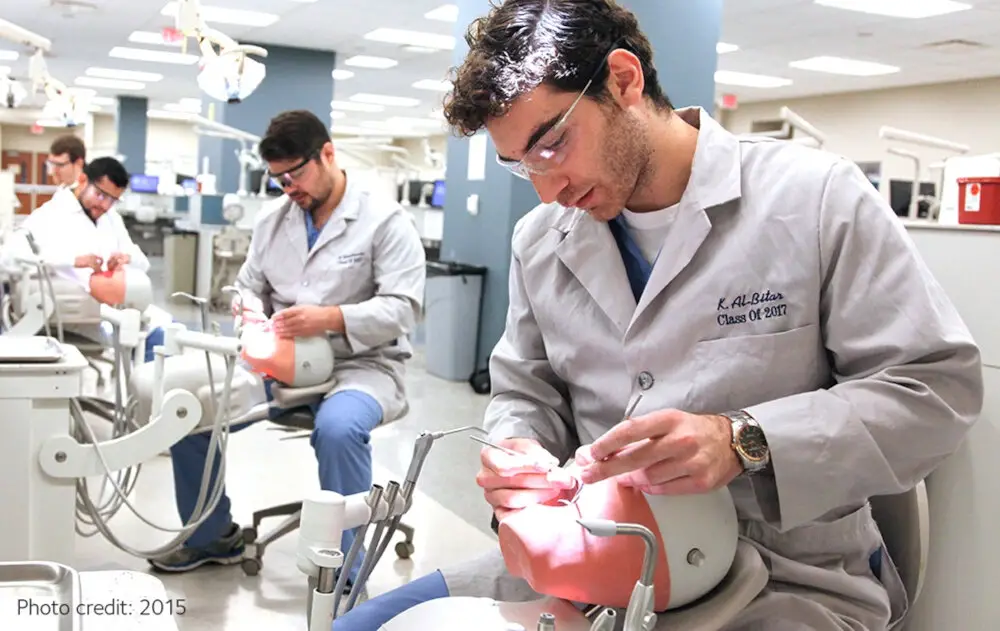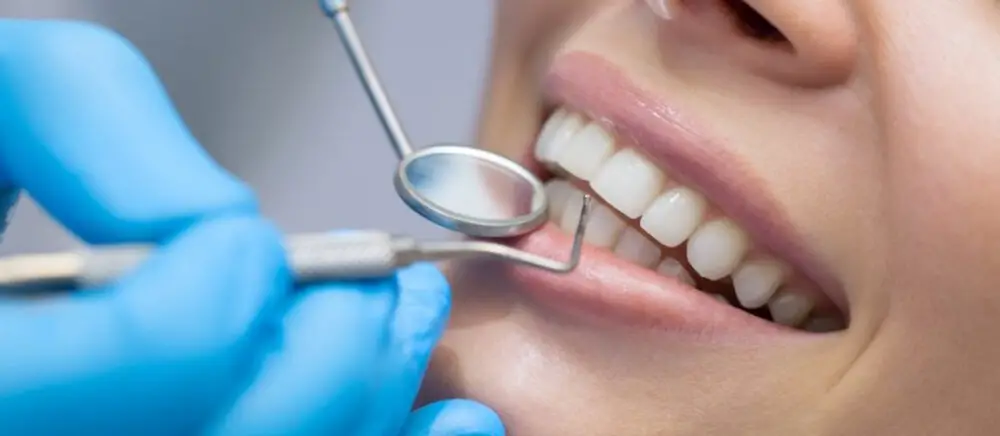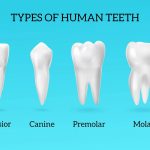Anatomic Insight: Exploring the Types of Wisdom Teeth and Their Functions

Wisdom teeth, also known as third molars, are the last teeth to emerge in the human mouth. These teeth usually develop between the ages of 17 to 25 and are located at the back of the mouth. While some people are lucky enough to have their wisdom teeth grow without any complications, many others experience pain, discomfort, and other dental problems due to these teeth. Despite the fact that wisdom teeth have been the subject of numerous studies, many people still lack knowledge about their types, functions, and potential problems they may cause. Therefore, exploring the types of wisdom teeth and their functions is a crucial step in understanding oral health and promoting dental hygiene. There are four types of wisdom teeth, namely vertical, distoangular, mesioangular, and horizontal. The vertical type is the most common and the simplest to extract. It grows straight up like any other tooth and causes no issues. The distoangular type is the second most common, and it grows at an angle away from the second molar. This type of wisdom tooth can cause some pain and discomfort and is usually extracted. The mesioangular type grows at an angle towards the front of the mouth and can cause pain and swelling. The horizontal type is the rarest, and it grows sideways, causing extreme discomfort and pain. This type of wisdom tooth requires immediate extraction as it can damage the adjacent teeth and gums.
Wisdom teeth, also known as third molars, are the last set of teeth to emerge in an adult’s mouth. These teeth typically appear between the ages of 17 and 25, although some people may not develop them at all. Wisdom teeth can cause discomfort, pain, and even infection when they become impacted or do not have enough room to emerge properly. Although they were once believed to serve a functional purpose in the past, wisdom teeth are now considered to be vestigial structures that are no longer necessary for human survival. Despite this, dentists may still recommend their removal to prevent dental problems from occurring.
Understanding wisdom teeth is crucial for maintaining good oral health and preventing potential complications. These third molars typically emerge between the ages of 17 and 25, and often cause discomfort due to overcrowding or misalignment. It is important to recognize the different types of wisdom teeth and their varying functions, such as the potential role they play in chewing and dental occlusion. Additionally, understanding the anatomy of wisdom teeth and their potential impact on neighboring teeth can help identify the need for removal or other dental interventions. With proper knowledge and care, one can prevent potential pain and complications associated with wisdom teeth.
The article \Anatomic Insight Exploring the Types of Wisdom Teeth and Their Functions\ delves into the intricate details of wisdom teeth, their types, and their functions. The author explains that wisdom teeth, also known as third molars, are the last teeth to emerge in the mouth, usually between the ages of 17 and 25. The article then goes on to describe the four types of wisdom teeth, including their shapes and positions in the mouth. The author highlights the importance of wisdom teeth in chewing and grinding food, as well as their potential to cause dental problems such as impaction and infection. Overall, the article provides a comprehensive overview of wisdom teeth and their significance in dental health.
Types of Wisdom Teeth

Wisdom teeth, also known as third molars, are the last set of teeth to emerge in the human mouth, usually around the ages of 17-25. These teeth are often associated with pain and discomfort, and many times, they need to be extracted. However, wisdom teeth can serve essential functions in the mouth, such as aiding in chewing and contributing to jawbone density. Understanding the different types of wisdom teeth can provide insight into their functions and potential complications. There are four types of wisdom teeth: vertical, mesial, horizontal, and distal. Vertical wisdom teeth are the most common type and emerge upright in the jawbone. These teeth typically cause minimal discomfort and rarely require extraction. Mesial wisdom teeth emerge at an angle towards the front of the mouth, while horizontal wisdom teeth grow parallel to the jawbone. These types of wisdom teeth can cause significant pain and pressure, and they often require extraction. Finally, distal wisdom teeth grow at an angle towards the back of the mouth, making them challenging to clean and maintain. In some cases, distal wisdom teeth can cause gum disease and tooth decay, leading to extraction. By understanding the different types of wisdom teeth, individuals can take proactive steps to maintain proper oral hygiene and prevent potential complications.
The mandibular third molars, commonly referred to as wisdom teeth, are the last set of teeth to develop in the human dentition, typically emerging between the ages of 17 and 25. These teeth are located at the back of the lower jaw, and each individual may have two or four of them. Despite their name, wisdom teeth do not play an essential role in chewing or biting functions and are often the culprits of dental problems such as impaction, infection, and overcrowding. As such, dental professionals often recommend their removal to prevent further complications and maintain optimal oral health.
Maxillary third molars, commonly known as upper wisdom teeth, are the third and final set of molars to emerge in the upper jaw. These teeth typically erupt between the ages of 17 and 25, but may never emerge at all. Maxillary third molars can be a source of dental problems when there is not enough space in the mouth for them to grow in properly. This can lead to impaction, infection, and damage to adjacent teeth. However, when they do grow in properly, they can help with chewing and aid in the overall function of the mouth. It is important to consult with a dental professional to determine the best course of action for managing maxillary third molars.
Supernumerary wisdom teeth are an interesting dental phenomenon that occurs when an individual has more than the usual four wisdom teeth. These extra teeth can cause issues with overcrowding, impaction, and infection, leading to discomfort and pain. Many people may not even be aware that they have supernumerary wisdom teeth as they may not emerge fully or at all. However, those who do have these extra teeth may require dental intervention to prevent further complications. While the exact cause of supernumerary wisdom teeth is not fully understood, it is believed to be related to genetic factors and the evolution of the human dental structure. Overall, supernumerary wisdom teeth are a fascinating aspect of dental anatomy that can impact an individual’s oral health.
Functions of Wisdom Teeth

Wisdom teeth, also known as third molars, are the last set of teeth to emerge in the mouth, typically appearing between the ages of 17 and 25. Although they are often associated with dental problems and extractions, wisdom teeth do serve several important functions. One of their primary roles is to aid in the chewing and grinding of tough, fibrous foods. As our ancestors’ diets consisted of more coarse foods, such as nuts and roots, wisdom teeth were essential for breaking down these tough substances. However, as our diets have evolved, wisdom teeth have become less necessary, leading to their removal in many cases. Another important function of wisdom teeth is to provide structural support for the jaw. In some cases, the presence of wisdom teeth can prevent the jawbone from atrophying, which can occur when teeth are missing or extracted. Wisdom teeth can also help to maintain the proper spacing between the teeth, preventing shifting or crowding that can lead to orthodontic problems. However, when wisdom teeth do not fully emerge or are impacted, they can actually cause more harm than good, leading to infection, decay, and damage to surrounding teeth. In such cases, removal may be necessary to ensure proper oral health.
The primary function of wisdom teeth is a subject of much debate among scientists and dental professionals. Some argue that the third molars were necessary in our evolutionary past for grinding tough foods like roots and nuts, while others believe they served as replacements for teeth lost over time. However, with modern advancements in oral hygiene and diet, many people no longer need these teeth, and they can even cause problems such as impaction, infection, and overcrowding. Despite their controversial role in human anatomy, wisdom teeth continue to fascinate researchers and patients alike, providing a glimpse into our distant past and the evolution of our species.
Wisdom teeth, also known as third molars, were once crucial components of our evolutionary history, serving as replacements for worn-out teeth due to a diet that consisted of coarse and rough foods. However, with the advent of modern cooking methods and changes in our diet, the need for wisdom teeth has diminished. Despite this, wisdom teeth continue to be a topic of interest for researchers and dentists alike, as their presence or absence can provide clues to our evolutionary history and development. Understanding the types of wisdom teeth and their functions can shed light on how our ancestors adapted to survive and thrive in their environments, and how our own bodies have evolved over time.
Wisdom teeth, also known as third molars, can have a significant impact on oral health. These teeth typically erupt in the late teen or early adult years, but often cause pain and discomfort due to their size and positioning in the mouth. When wisdom teeth do not have enough room to grow, they can become impacted, leading to infection, gum disease, and damage to adjacent teeth. In some cases, wisdom teeth may need to be extracted to prevent these complications. However, if wisdom teeth are able to grow properly and are well-maintained through proper oral hygiene, they can serve as valuable chewing surfaces and contribute to overall oral health.
Complications of Wisdom Teeth

Wisdom teeth, also called third molars, are the last teeth to emerge in the mouth, usually between the ages of 17 and 25. While some people may have enough space in their jaw to accommodate these teeth, most people experience complications due to their eruption. These complications can range from mild discomfort to severe pain and infection. One of the most common complications of wisdom teeth is impaction. This occurs when the wisdom teeth do not have enough space to emerge properly and become trapped beneath the gums. Impacted wisdom teeth can cause pain, swelling, and infection. They can also damage adjacent teeth and cause gum disease. In some cases, impacted wisdom teeth may need to be surgically removed to prevent further complications. Other complications of wisdom teeth include decay, gum disease, and cyst formation. It is important to have regular dental check-ups to monitor the growth and development of wisdom teeth and address any complications early on.
Impacted wisdom teeth are a common dental condition that occurs when the third molars do not have enough space to emerge or grow properly. In such cases, the wisdom teeth may be partially or completely trapped beneath the gum line, causing pain, inflammation, and even infections. Impacted wisdom teeth can also lead to the development of cysts or tumors, which can damage the surrounding teeth and bone. Therefore, dentists may recommend the removal of impacted wisdom teeth to prevent further complications and ensure the overall health of the patient’s mouth. Despite the potential risks of impacted wisdom teeth, some people may have enough space in their jaws to accommodate these molars without any issues.
Pericoronitis is a common dental problem that occurs when the wisdom teeth fail to erupt properly, causing the surrounding gum tissue to become inflamed and infected. This condition is often characterized by severe pain, swelling, and tenderness in the affected area, which can make it difficult to eat, speak, or even open your mouth. In some cases, pericoronitis can lead to more serious complications, such as the formation of abscesses or the spread of infection to other parts of the body. Treatment for pericoronitis typically involves antibiotics, pain medications, and in some cases, surgical removal of the affected teeth.
Cysts and tumors are potential complications that can occur with wisdom teeth. A cyst is a sac filled with fluid that can form around an impacted wisdom tooth, causing damage to the surrounding bone tissue. Tumors, on the other hand, are abnormal growths of cells that can be either benign or cancerous. While tumors are less common than cysts, they can still pose a significant risk to oral health if left untreated. It is important for individuals with impacted wisdom teeth to undergo regular dental check-ups to detect any cysts or tumors early on and prevent further complications.
Gum disease, also known as periodontal disease, is a common dental problem that affects the gums and bone supporting the teeth. It is caused by the buildup of bacteria in the mouth, which leads to inflammation and eventually, damage to the gum tissue and bone. Gum disease can range from mild gingivitis, which causes redness and swelling of the gums, to severe periodontitis, which can result in tooth loss. Symptoms of gum disease include bleeding gums, bad breath, and loose teeth. Treatment options include professional cleaning, antibiotics, and surgery in more severe cases. Good oral hygiene, including regular brushing and flossing, can help prevent gum disease.
Management of Wisdom Teeth

Wisdom teeth, also known as third molars, are the last set of teeth to emerge in a person’s mouth, typically between the ages of 17 and 25. While some people are fortunate enough to have enough space in their jaws for these teeth to grow in properly, most people experience issues with their wisdom teeth. This is because the human jaw has evolved to be smaller than it was in ancient times, which means that many people simply don’t have enough room for their wisdom teeth to come through properly. When wisdom teeth do not grow in properly, they can cause a range of problems, including pain, infection, and damage to other teeth. For this reason, it is often necessary to remove wisdom teeth. The management of wisdom teeth typically involves extraction, which is a surgical procedure that is performed under local anesthesia. In some cases, general anesthesia may be used. During the procedure, the dentist or oral surgeon will make an incision in the gum tissue to expose the tooth and bone. They will then remove the tooth in sections, if necessary, and close the incision with stitches. After the procedure, the patient will need to rest for a few days and avoid eating hard or crunchy foods. Pain medication and antibiotics may be prescribed to help manage discomfort and prevent infection. Overall, the management of wisdom teeth is a routine dental procedure that can help to prevent a range of dental problems and improve overall oral health.
Monitoring is an essential aspect of dental care that involves closely observing the growth and development of wisdom teeth. Dentists and oral surgeons use various diagnostic tools such as X-rays and CT scans to monitor the position and alignment of wisdom teeth. This process is crucial in identifying potential problems that may arise from impacted wisdom teeth, such as infection, gum disease, and damage to adjacent teeth. Regular monitoring allows dental professionals to determine the appropriate course of action, whether it be extraction or continued observation. By closely monitoring the growth and development of wisdom teeth, patients can maintain optimal oral health and prevent potential complications.
Extraction is the removal of a tooth from its socket in the jawbone, a common procedure for wisdom teeth that are impacted, infected or causing pain. The reason for extraction is to prevent further damage to surrounding teeth and gums, as well as to alleviate discomfort and prevent infection. During the procedure, a local anesthetic is administered to numb the area, and the tooth is carefully loosened and extracted using specialized instruments. In some cases, a small incision may need to be made in the gum to access the tooth. After the extraction, the patient is instructed to rest and avoid strenuous activity for a few days while the area heals. Pain medication and antibiotics may be prescribed to manage discomfort and prevent infection.
Although the article is about wisdom teeth, it is essential to mention the importance of pain management during and after the extraction process. Pain management is a crucial aspect of dental and medical procedures. The discomfort and pain associated with wisdom teeth extraction can be managed using various methods, including medication and natural remedies. The type and intensity of pain experienced may vary depending on the individual’s pain threshold and the complexity of the extraction process. Therefore, it is essential to discuss pain management options with a dental professional beforehand to ensure a comfortable and smooth recovery process.
Aftercare is a crucial component of wisdom teeth extraction, as it helps to reduce the risk of infection and promote healing. Following the procedure, patients may experience some discomfort, swelling, and bleeding, which can be managed with pain medication, ice packs, and gauze pads. It is important to avoid smoking, drinking through a straw, and eating hard or crunchy foods for a few days after the extraction to prevent dislodging the blood clot and delaying the healing process. Additionally, maintaining good oral hygiene by gently brushing and rinsing with salt water can help to keep the extraction site clean and prevent infections. Regular follow-up visits with the dentist or oral surgeon are also advised to ensure proper healing and to address any concerns or complications that may arise.
Wisdom teeth, also known as third molars, are the last set of molars to develop and emerge at the back of a person’s mouth. There are four types of wisdom teeth: mesial, distal, buccal, and lingual. Mesial wisdom teeth are the most common type, located closest to the front of the mouth. Distal wisdom teeth are situated towards the back while buccal wisdom teeth are found on the cheek side and lingual wisdom teeth on the tongue side. The primary function of wisdom teeth is to aid in chewing and grinding food. However, due to changes in human evolution, wisdom teeth have become obsolete, and many people undergo extraction procedures to prevent dental problems such as impaction, infection, and crowding. Despite their declining importance, wisdom teeth still offer a fascinating glimpse into the evolution of human dentition.
Monitoring and managing wisdom teeth is crucial for maintaining oral health and preventing potential complications. Wisdom teeth, also known as third molars, often emerge in late adolescence or early adulthood and can cause problems such as overcrowding, impaction, infection, and damage to surrounding teeth and gums. By closely monitoring the development of wisdom teeth through regular dental check-ups and X-rays, dentists can identify potential issues and take appropriate action, such as recommending extraction or other treatments. Proper management of wisdom teeth can help prevent pain, swelling, and other discomforts associated with dental problems, as well as reduce the risk of more serious complications, such as abscesses or cysts. Overall, monitoring and managing wisdom teeth is an important aspect of maintaining good oral health and preventing future dental issues.
In conclusion, wisdom teeth may seem like a nuisance, but they actually serve a vital role in our oral health. Understanding the different types of wisdom teeth and their functions can help us take better care of our teeth and prevent potential problems down the road. If you are experiencing discomfort or pain related to your wisdom teeth, it is important to consult with a dental professional to determine the best course of action. Regular dental check-ups and proper oral hygiene practices can also help ensure the health and longevity of all of our teeth, including our wisdom teeth.
Conclusion

In conclusion, understanding the different types of wisdom teeth and their functions provides a deeper insight into the complexities of human anatomy. While some individuals may go through life without any issues related to their wisdom teeth, others may face various challenges. The mesial and distal roots, the varying shapes of the crowns, and the potential for impaction are all critical factors to consider when discussing wisdom teeth. As with any aspect of human biology, the more we learn about our bodies, the better equipped we are to manage and maintain our health. By exploring the intricacies of wisdom teeth, we gain a greater appreciation for the complexity and beauty of the human form.







